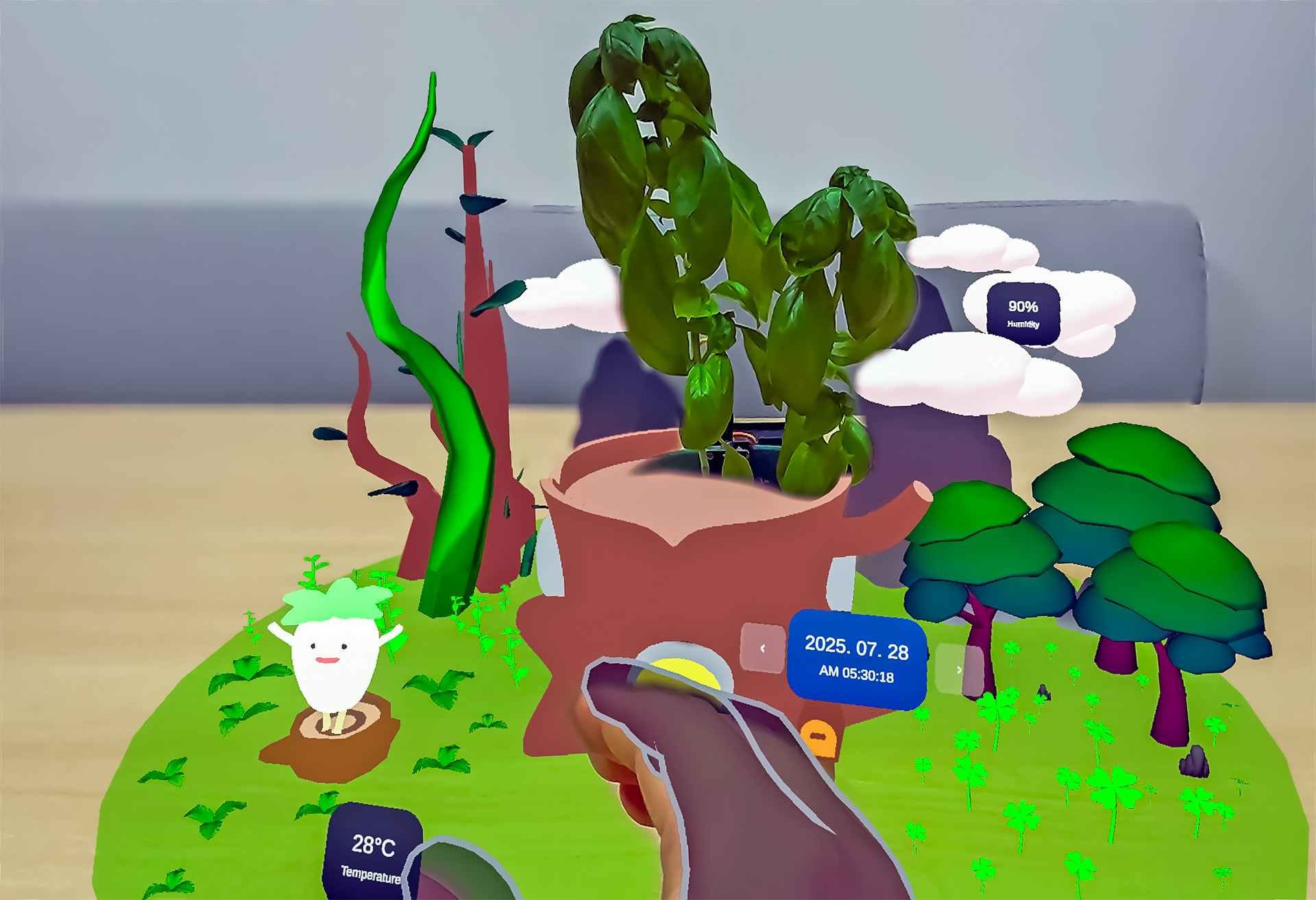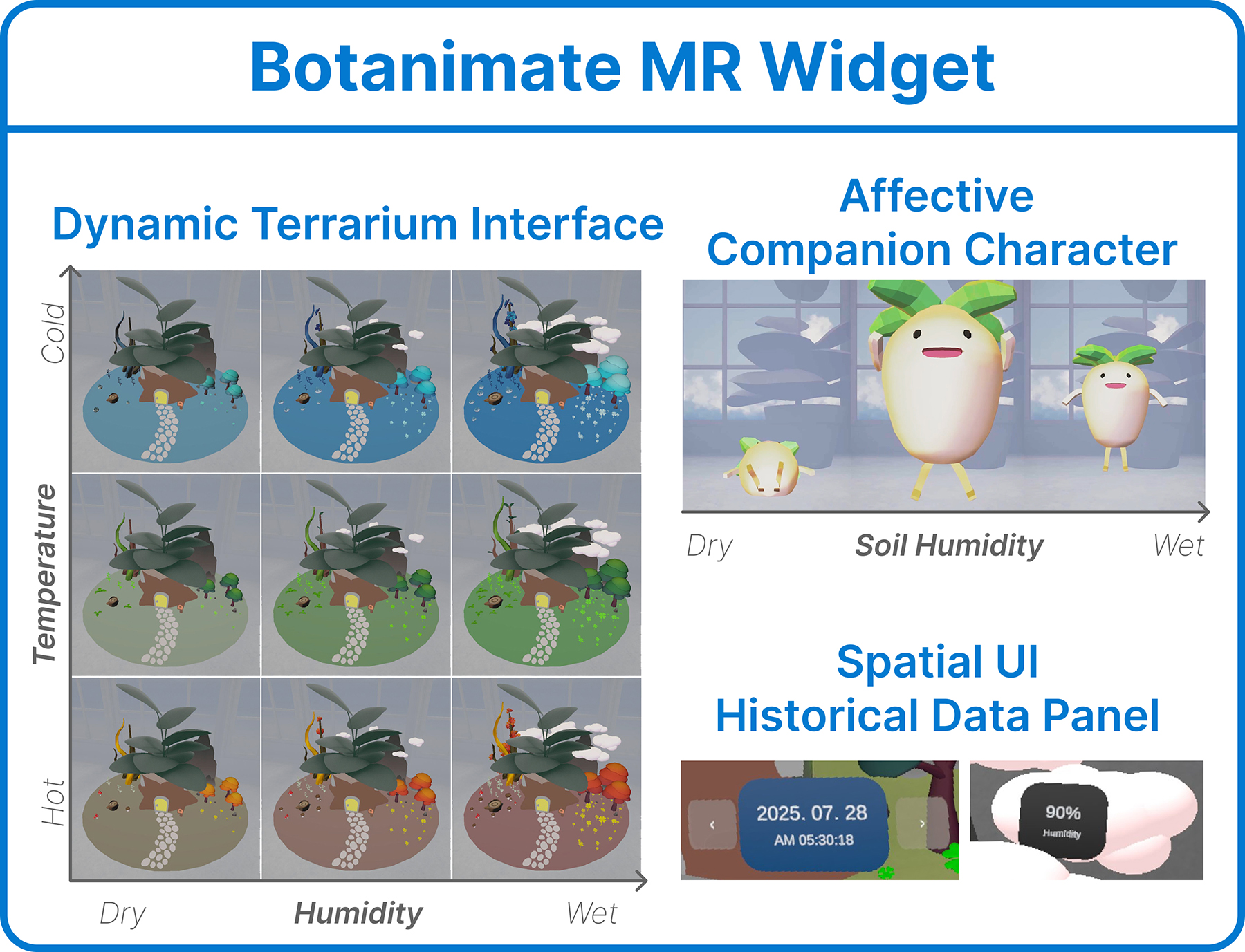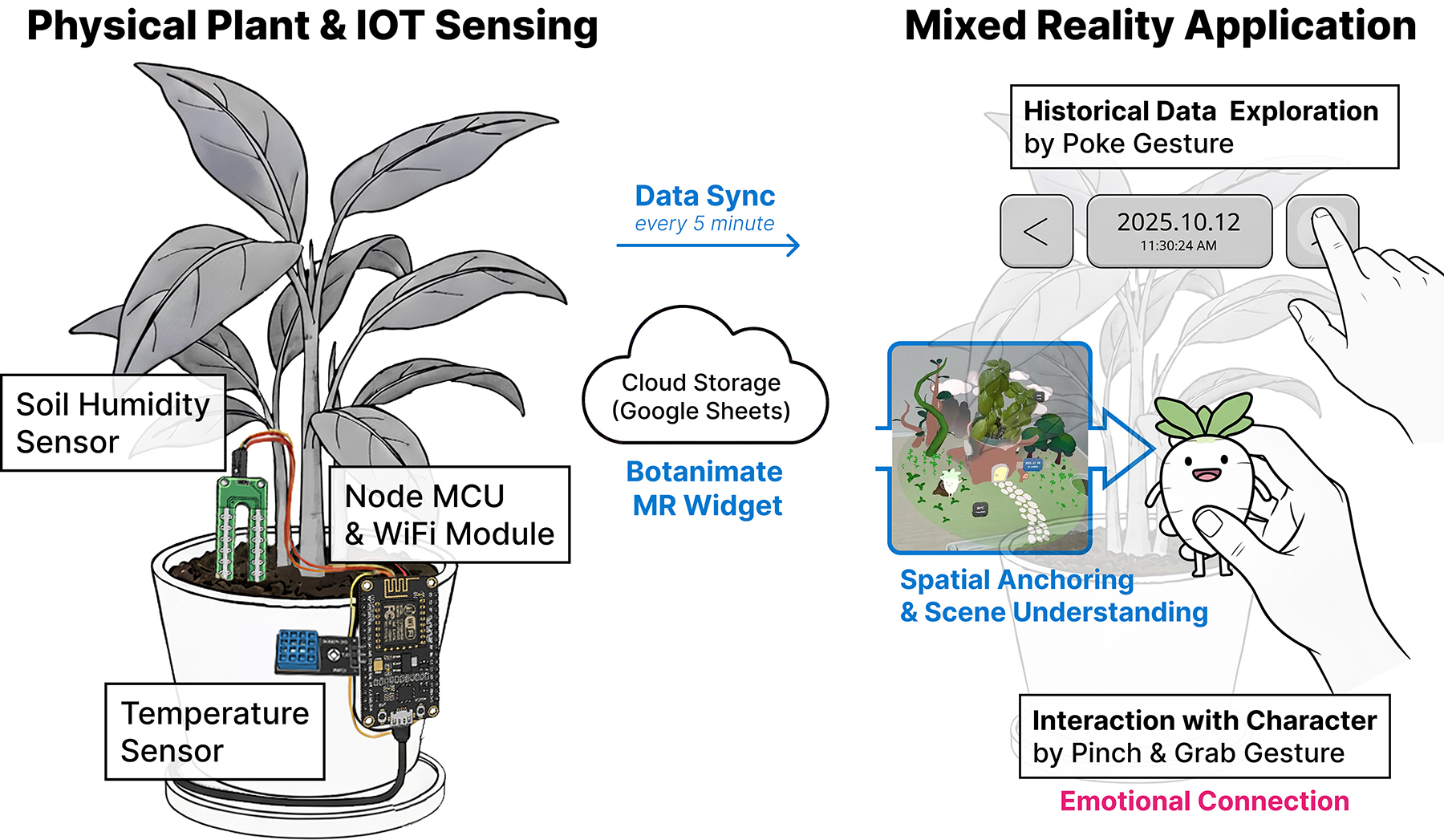BotaniMate: Affective Interaction with Plant’s Data in MR
Project Date: 2024 - 2025
이다영, 주진호
Tools: Meta Quest 3, NodeMCU
Showcase: 2025 ISMAR Demo
BotaniMate is a mixed reality (MR) widget that visualizes realtime
IoT plant data through an expressive virtual character and a
dynamic terrarium interface. By translating temperature and soil
moisture readings into environmental changes within the terrarium
and corresponding character behaviors, the system fosters emotional
connection and intuitive understanding of plant data monitoring
and care. Users interact using natural hand gestures and navigate
historical data through spatial UI elements. Integrating IoT
sensing, cloud storage, and Unity-based MR visualization on Meta
Quest 3, BotaniMate transforms abstract sensor data into playful,
affective experiences—enhancing empathy, memory, and engagement
in everyday plant care.

The IoT system continuously
monitors soil humidity and temperature, synchronizing the
data to cloud storage every five minutes, where it is then reflected
in the MR spatial widget. A virtual MR terrarium is overlaid above
the physical plant’s location, as pre-registered by the user, ensuring
spatial alignment between the virtual and real-world environments.
Environmental conditions are visualized through ambient spatial
cues. Temperature is expressed through color gradients in the terrarium
environment—shifting between warm and cool tones. Humidity
is reflected through changes in atmospheric density, vegetation
growth, and cloud volume.
At the center of the interface
is an interactive companion character that responds to changes in
the plant’s condition through expressive behaviors: when humidity
is high, it jumps energetically; when moderate, it runs and hops
lightly; and when low, it lies down and exhibits tantrum-like gestures
to signal distress. These allow users to emotionally interpret
plant conditions at a glance. The character can be picked
up, moved, and repositioned using natural hand gestures—such
as pinch and grab—enhancing user engagement and interactivity.
BotaniMate transforms sensor data into emotionally resonant
“memory moments.” Users can explore historical data through a
mailbox-style UI panel by poking left and right arrow controls,
allowing them to navigate through past days and revisit previous
states of their plant’s environment.

The IoT sensor system is built using a NodeMCU board with a Wi-
Fi module, programmed via the Arduino IDE. A soil humidity sensor
and a temperature sensor continuously track environmental conditions,
with data automatically synchronized every five minutes to
Google Sheets for cloud storage. This real-time sensor data is then
retrieved in Unity and rendered as an immersive MR experience
on the Meta Quest 3. Meta Quest 3’s Depth API enables realistic
occlusion, allowing virtual elements to appear naturally within the
physical environment—for example, behind furniture or the user’s
hand. The system also supports natural, controller-free interaction
through Meta Quest’s hand-tracking and Unity’s Hand Grab Interactor,
enabling users to intuitively pick up, move, and reposition the
virtual character. The virtual terrarium environment is modeled in
Blender, while the character model and animations are created in
Maya.

The authors wish to thank Chaewon Shin for her contribution to
the development of the initial prototype. This work was supported
by Korea Institute for Advancement of Technology(KIAT) grant
funded by the Korea Government(MOTIE)(RS-2025-02304167,
HRD Program for Industrial Innovation).